After spending a lot of money in the summer, people expected Frank Lampard to achieve better results at Chelsea than he did last season. However, things went the opposite way, and their slump over the last few weeks has now led to a managerial change at Stamford Bridge.
Thomas Tuchel, the former Mainz, Paris Saint-Germain and Dortmund head coach, has now been appointed to lead Chelsea. So, what changes and tactics can we expect from the German in London? We are looking at a comprehensive overhaul and some possible new roles for the Chelsea players in this tactical analysis of what can be expected under Tuchel at Chelsea.
Jorginho returning as a regular starter?
At Dortmund, Tuchel played with one holding midfielder, and that role was taken by İlkay Gündoğan or Julian Weigl. In Paris, the German head coach often used a double-pivot, while the Brazilian centre-back, Marquinhos was pushed forward as a defensive midfielder, either as part of the double pivot or as the deepest midfielder in a three-man midfield. This role is pivotal for Tuchel’s teams, as he preaches control in most phases of play, and using the deepest midfielder is his way of ensuring this.
We believe that Jorginho is going to return to the starting lineup under Tuchel. The former Napoli midfielder had actually been one of Tuchel’s targets during his time in France, and so we know that Tuchel does rate Jorginho highly. The demands of this role under the German are quite high, with exceptional understanding of the game, and good communication skills with teammates being just two of the intangibles that any player who plays there will need to have, which once again points towards Jorginho as the outstanding option from this Chelsea squad.
So, what would Jorginho be doing? This section uses some examples of Tuchel’s previous midfielders to predict Jorginho’s potential duties and responsibilites.
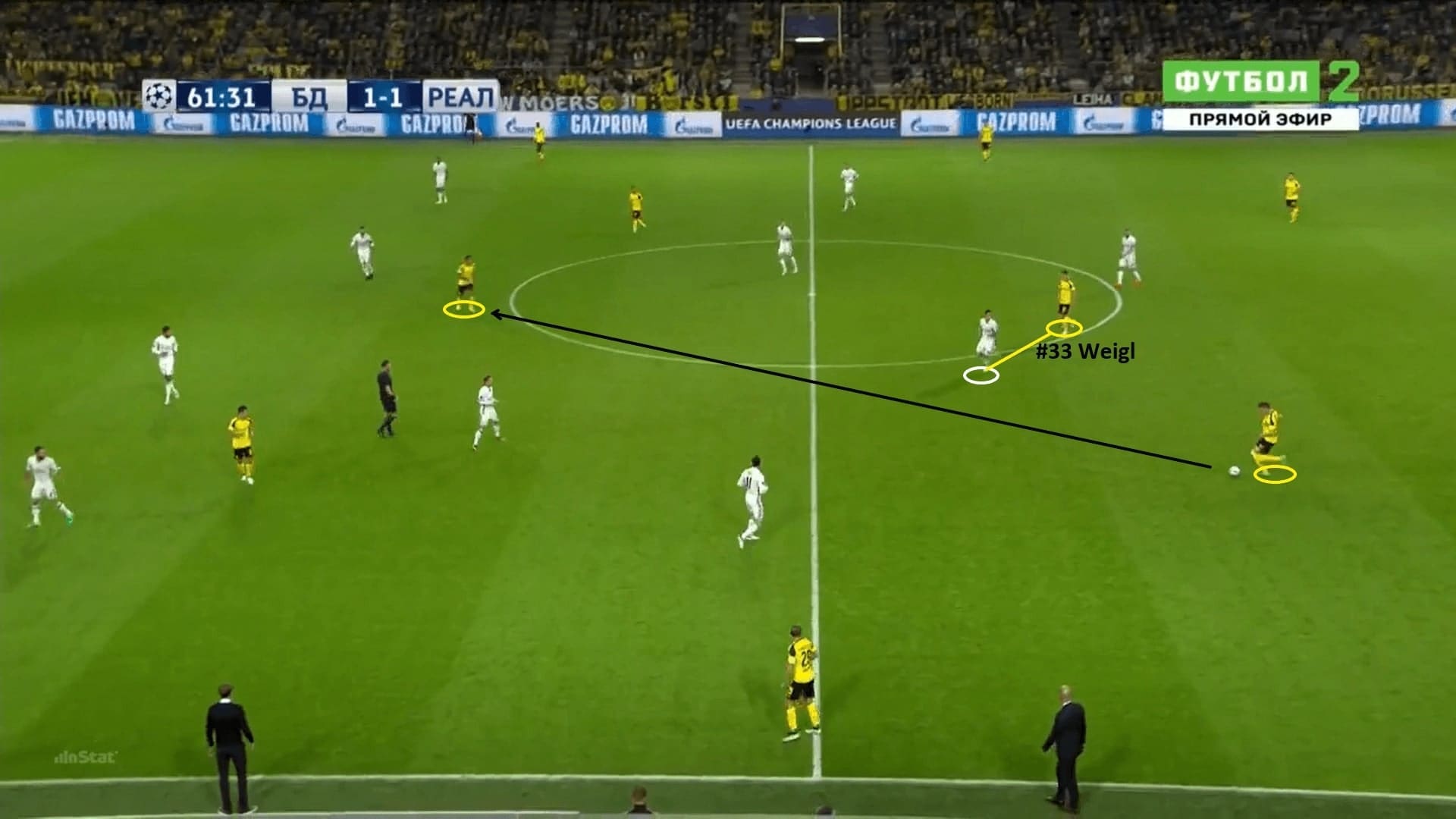
Tuchel is fluid with his build-up shape, which has varied between a 2-1, 3-1, 3-2 and 4-2 in his career. Regardless of the exact shape being used, the pivot’s ability is going to impact the team performance the most. Therefore, not only should this player understand the game, but he should also be able to communicate with teammates – a strength of Jorginho’s.
For example, consider the situation in the previous image. Weigl does not verbally communicate with his teammates, but uses the fact that he is being marked to position himself in such a way as to open the passing lane to the striker, allowing for a vertical pass to be played. It is in this manner, by understanding the game situation and almost prompting his teammates’ actions with his movement and positioning, that Jorginho will need to ‘dictate’ proceedings under Tuchel.
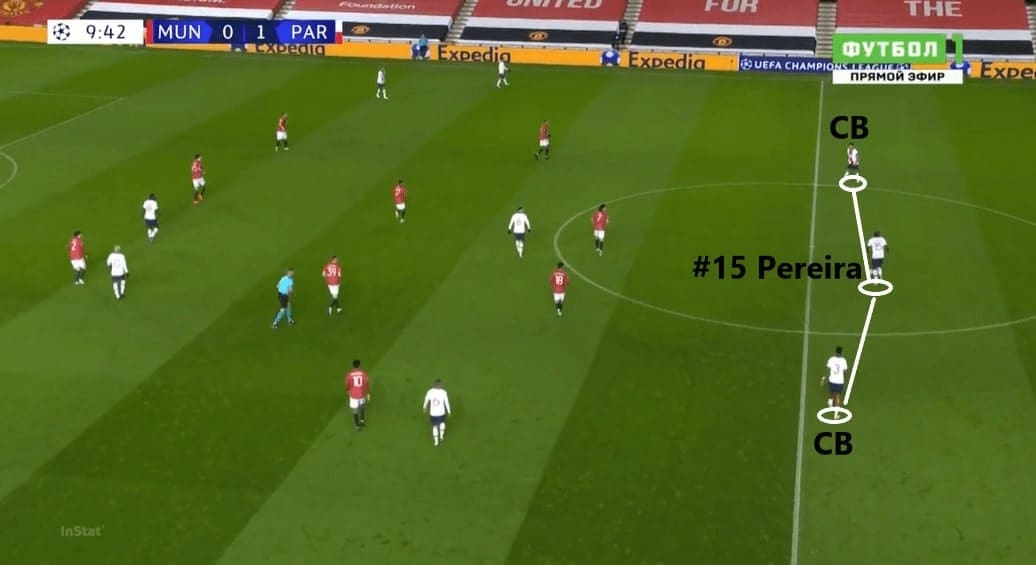
At PSG, with players like Danilo Pereira and Idrissa Gueye who are less competent on the ball, Tuchel adapted and slightly tweaked the build-up phase. He preferred a back three in the first phase, giving the centre-backs a larger responsibility to initiate attacks.
Under Maurizio Sarri, we have seen Jorginho do both jobs well, at both Chelsea and Napoli. Therefore, we believe that Jorginho would be the best option for Tuchel as the deepest midfielder with regard to build-up and offensive play, but the role requires more than that.
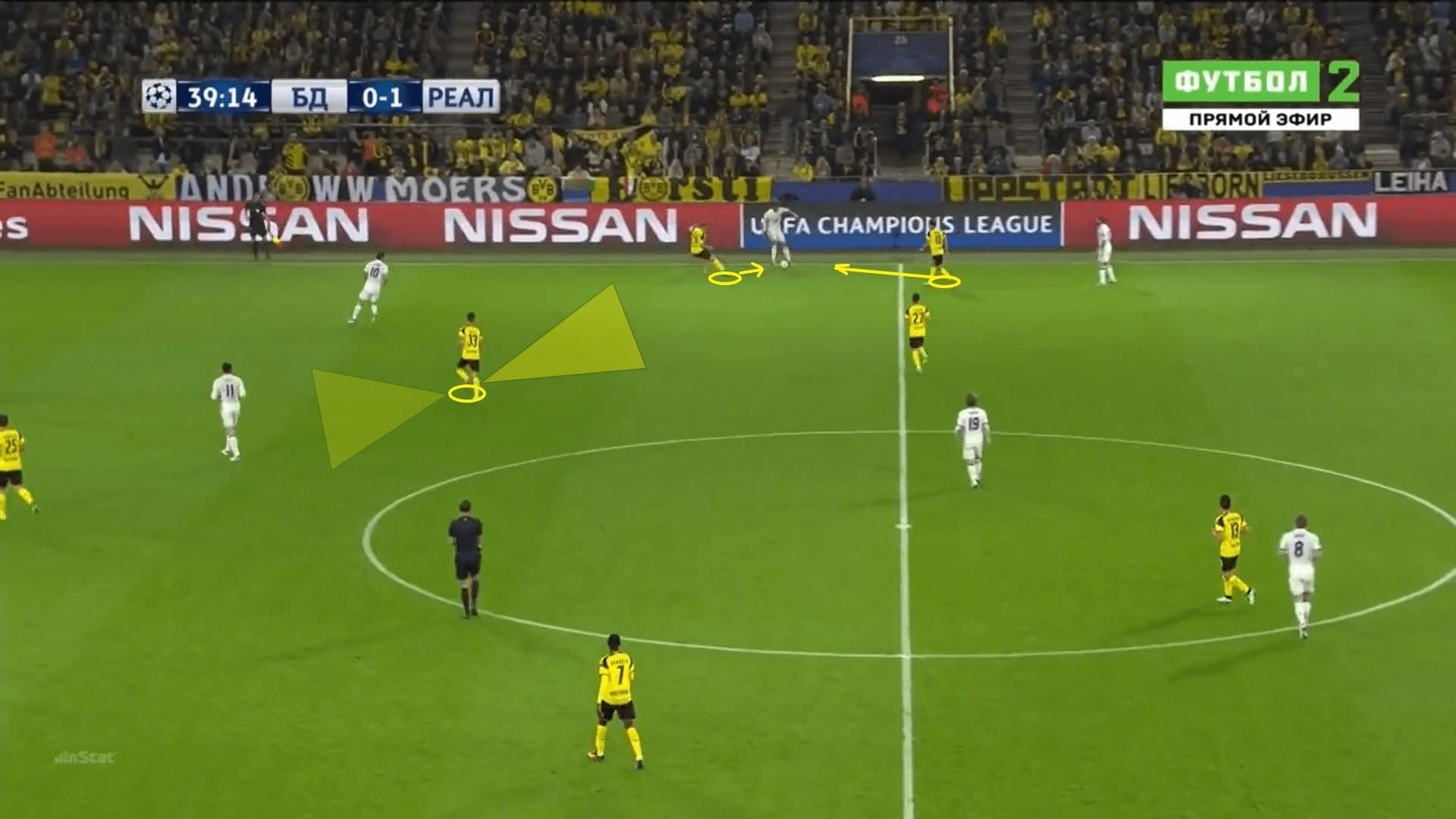
The pivot is also vital in the defensive phase as he would likely be the only one protecting the back four. Therefore, instead of man-marking a specific player, he needs to cover space and appear at the right place at the right time.
This will be a challenge for Jorginho as the Italian was criticized for his weaknesses in terms of physicality under Sarri.
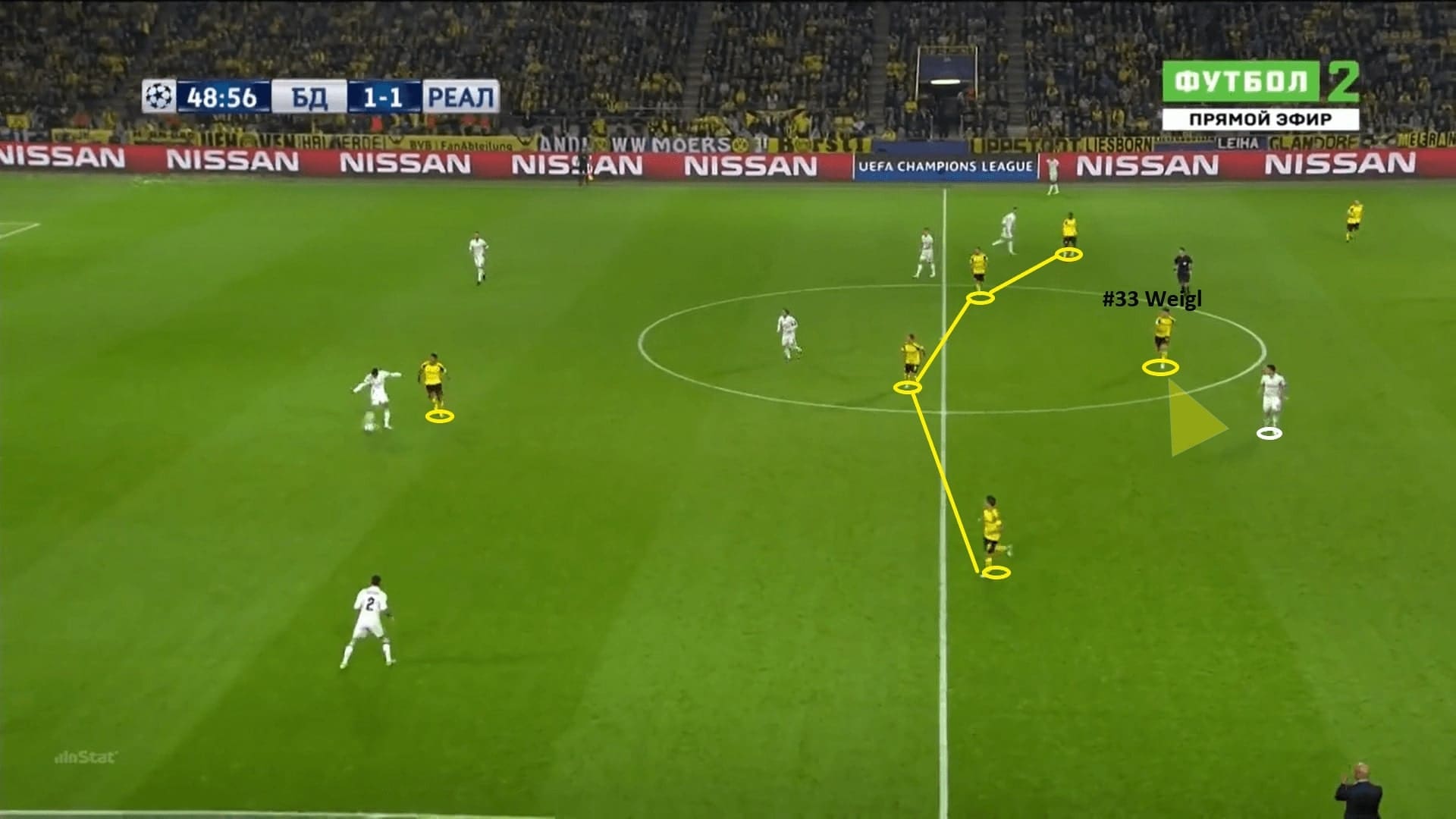
However, Tuchel will not require Jorginho to play like Wilfred Ndidi, for example, or even like Gueye and Pereira at PSG. The defensive midfield role, under Tuchel, is more demanding in terms of awareness, positioning and quick thinking, than outright physicality. This is extremely important since the team will usually be defending in a 4-1-4-1 shape, and so the pivot will need to cover the horizontal space behind the midfield block. He will need to understand when, where and who to press to avoid being caught out, and the main task will be to buy time for the defence to be able to readjust into a compact shape, rather than using physicality to win duels outright.
The above image is a great demonstration of this by Weigl at Dortmund. When the left winger was dragged towards the right-back, moving towards the flank too early, the pivot can see that the passing channel in the half-space was opened up. Weigl reads this and thus moves to that zone, so that even if the pass is made, he is close by to apply pressure and delay the attack by long enough to allow Dortmund to regroup.
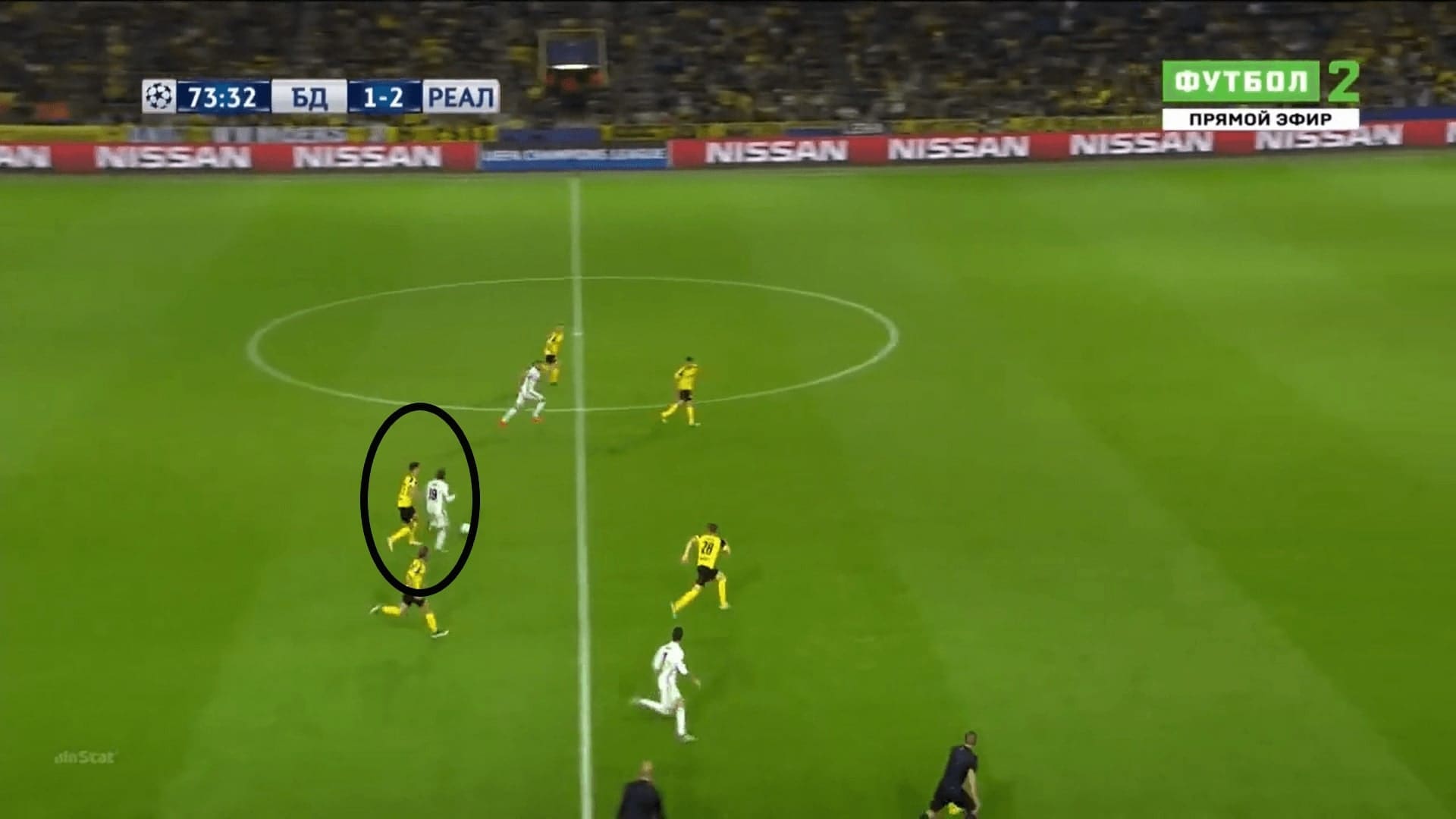
During transitions, the pivot must be able to kill the transitions that keep the high line safe. Even though he might not be quick enough to chase runners, he will need to resort to tactical fouls to nip opposition counter-attacks in the bud. Fernandinho at Manchester City has perhaps been the best in the Premier League at this over the past few seasons, and Jorginho (or whoever Tuchel picks to play that role at Chelsea) will need to quickly adopt a similar manner of employing tactical fouls, since the German will play a high line and an intensive style which will lead to counter-attacking situations if the ball is lost high up the pitch. The pivot will also need to move into the correct areas to be able to counter-press effectively when the ball is lost in those areas, before retreating quickly if that pressure does not lead to possession being regained.
If Tuchel needs one player in that position at Chelsea, it should be Jorginho – a player with enough intelligence to get the job done in his system.
Ziyech – the Neymar at Chelsea?
After reviewing some footage of Tuchel in France, we believe that there is a potential candidate as a secret weapon for the team. This player is Hakim Ziyech, who arrived at Stamford Bridge from Ajax in the summer. We believe the Moroccan international could be shaped as a key player for Chelsea, in a similar manner to how Tuchel used Neymar at PSG, given that they do have some similar characteristics.

The above is a comparison of Ziyech and Neymar’s heat maps for their respective teams this season. You can see how the former played under Lampard, as the right winger, often staying very wide on the right. Even though he would move into central areas on occasion, he was rarely involved in the build-up. This may be a little bit similar to Ángel Di María at PSG under Tuchel, cutting inside to shoot or crossing diagonally, but we feel he can do much more than this.
On the contrary, Neymar was given a free role by Tuchel, regardless of his starting position on paper. Not only did he appear on the left flank, but he was also involved more in zone 14, and much more in the second phase. This was because of his exceptional dribbling skills and creativity in terms of passing.
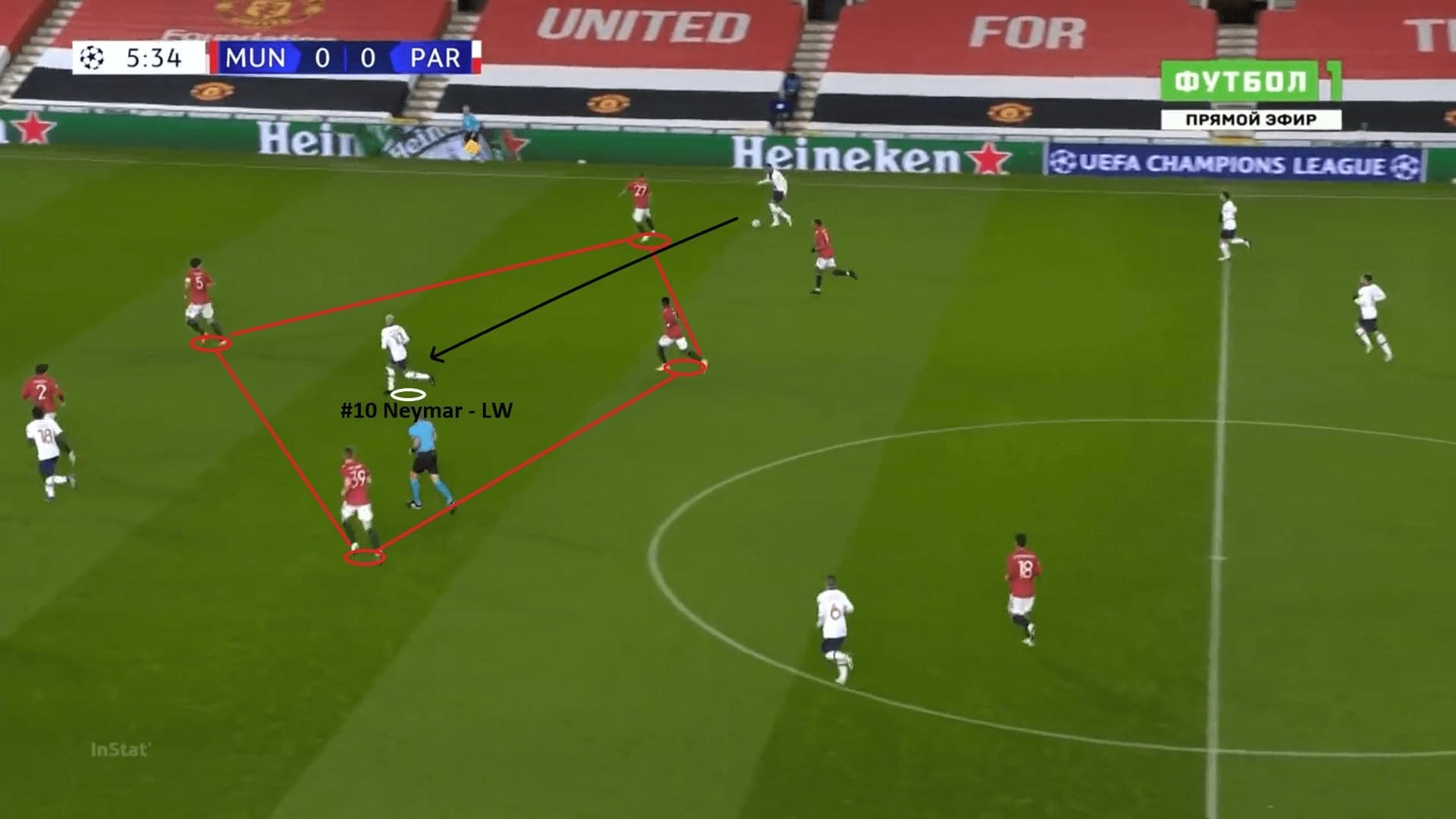
Neymar also has an excellent sense of recognizing spaces, appearing at the right time to support his teammates. Given his calibre and profile, he was the player responsible for organizing the attack in Paris. For example, the above image shows Neymar receiving possession between four players. This movement infield from his nominal left wing position often left opposition defences confused as to who should be picking him up.
Under Tuchel at PSG, Neymar was used as more than just a finisher; he turned into a creative outlet for the side. The question is, does Ziyech possess a similar skill-set to do this job for Tuchel at Chelsea?
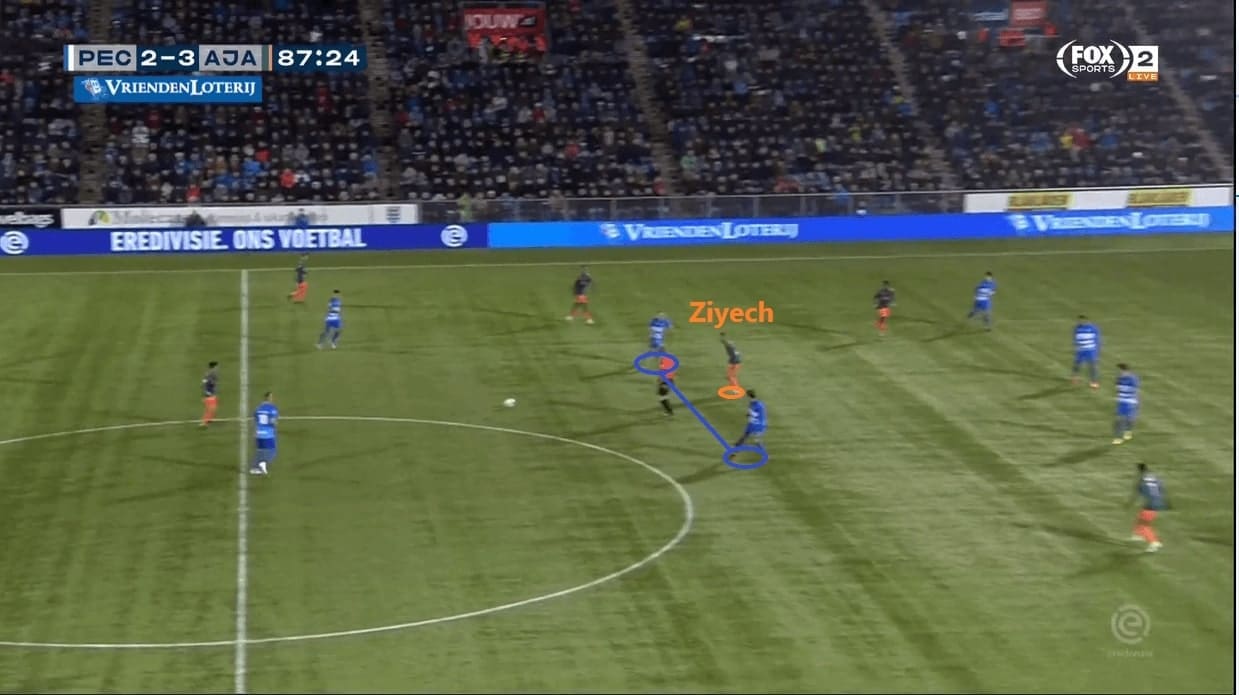
Going by the evidence from Ziyech’s career so far, with Ajax as well as with his national side, Morocco, we believe that he can fulfill this responsibility, as he has shown similar traits in terms of positioning and movement to that seen from Neymar at PSG.
For example, he is comfortable at receiving the ball in central spaces by maximizing positional superiority. The above image shows Ziyech receiving the ball between two players, and behind the second line centrally. Another part we should pay attention to is his understanding of the game – notice how he provides a vertical passing option for the centre-backs in this situation. When given the freedom to roam from his position like Neymar, we can expect Ziyech to utilize space well to link the attack from the second to the third phase.
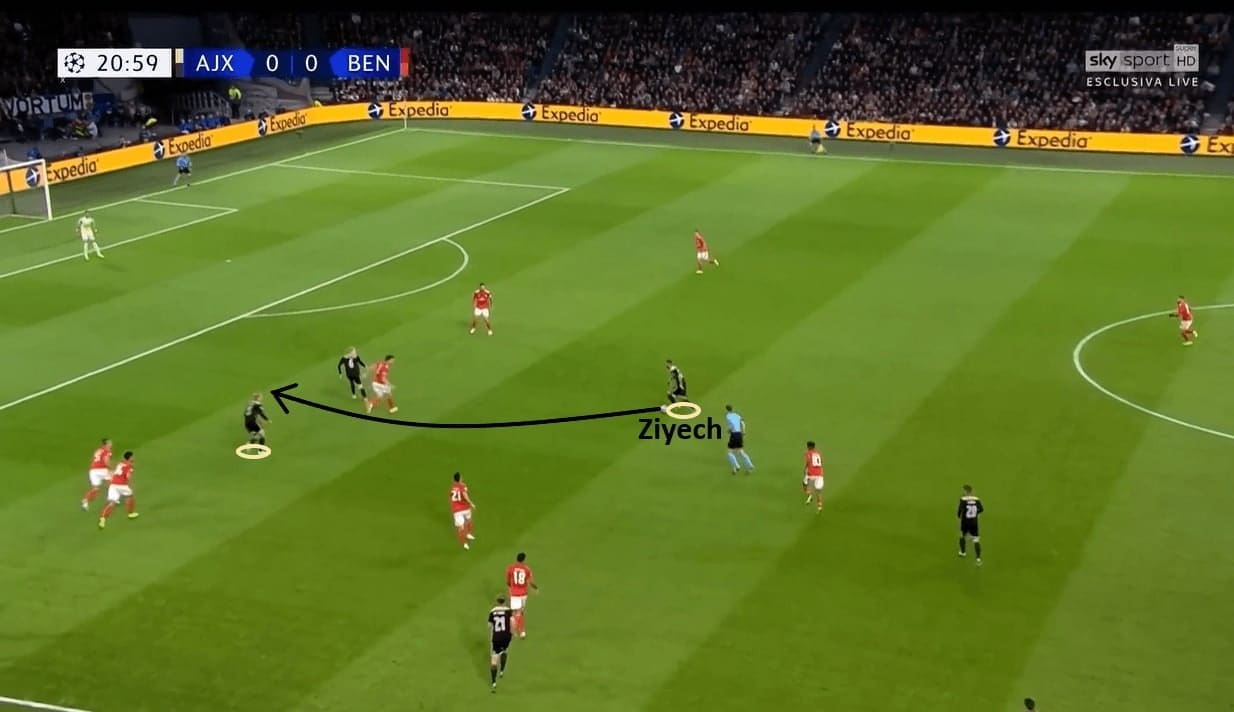
When Ziyech is in the final third, he should not be constrained by having to stay wide on the touchline, given his creativity. Learning under Erik ten Hag for years, the €40m signing perceives spaces well, and is adept not just at moving into those spaces himself, but also exploiting his teammates’ movement to make passes into those areas.
By playing Ziyech through the centre, he can play through passes and killer balls to send the attacking players into potential 1v1 situations against the opposition keeper. For example, look at the above example, where he pulls off a great pass to release runners behind the defence. If you want to get the best out of the likes of Timo Werner, providing them with this level of service is a good place to start.
Of course, this part of the analysis does not mean that Ziyech is going to play in one fixed role forever under Tuchel. It is just one of the more unconventional tactics that the German head coach might suggest, and the quality of Ziyech is such that he can fit into any attacking position as long as there is good balance and structure to the side. We expect that Ziyech’s performance levels will be much higher under Tuchel than what we have seen from him so far in London.
A new Chilwell?
Another interesting question to consider is the full-backs’ roles under Tuchel. In Paris, Layvin Kurzawa and Juan Bernat were more traditional full-backs, mainly going up and down the wide zones. However, if you saw how he instructed Raphaël Guerreiro at Dortmund, who not only played as a left-back, but also a left-winger and a left attacking midfielder, you can expect something similar from Ben Chilwell.
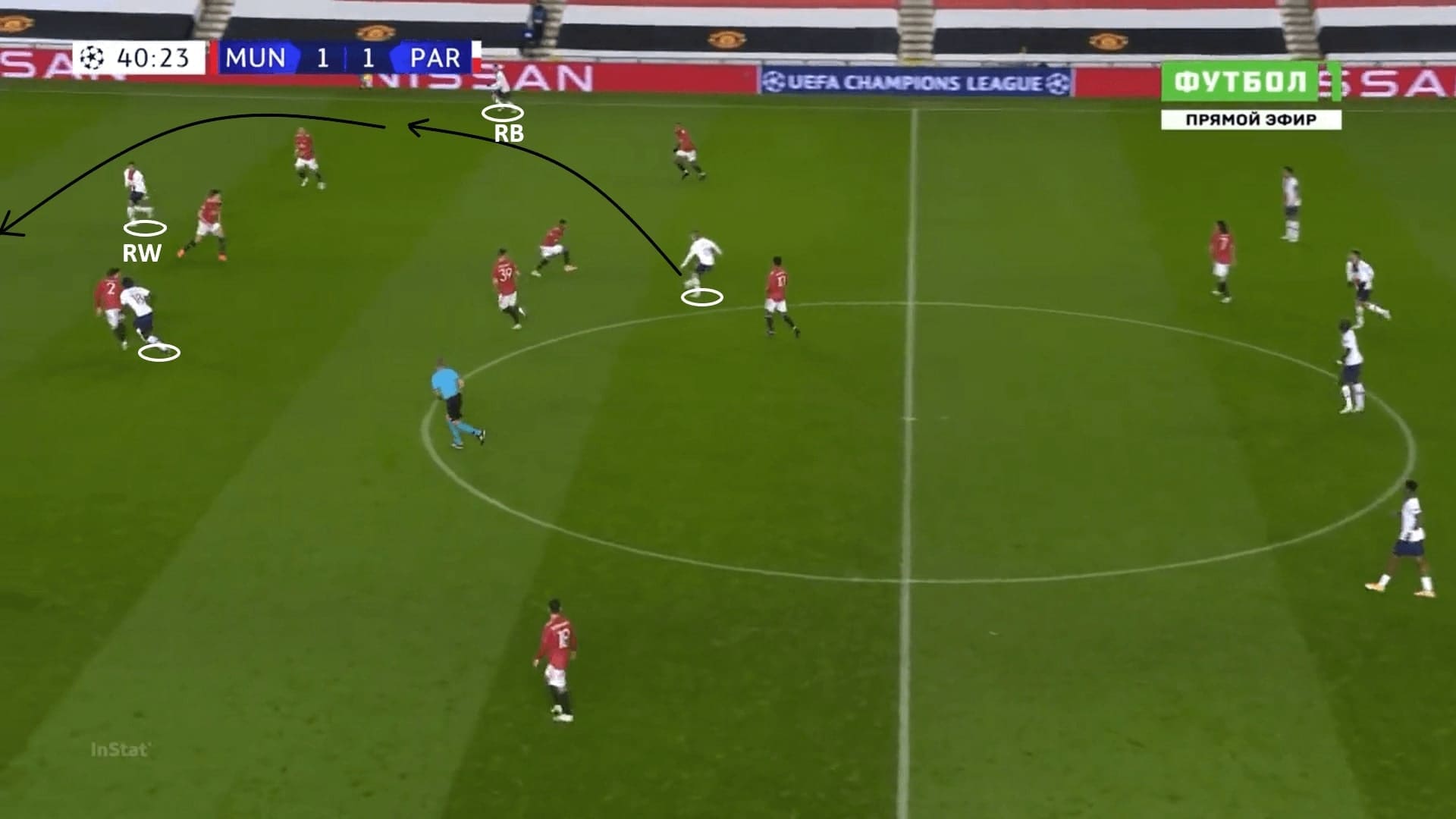
His instructions to his full-backs at PSG were made with the intention of keeping attackers such as Kylian Mbappé closer to the goal. This meant that the wingers should be narrow and inverted, which draws the opposition full-backs into narrow positions and opens the wide zones for his full-backs. This is a preferred pattern that Tuchel used at PSG this season – passing to wide zones in the second phase, then trying to cross early to attack space behind the backline.
The above image has shown the right-winger and striker making forward runs in the central lanes, freeing the right-back out wide. And when the right-back receives the ball, he could continue running with the ball or choose to cross early. This tactic is very similar to what Lampard did at Chelsea, and so the likes of Reece James will be familiar with this.

By comparing the heat map of Chilwell this season, and Guerreiro from the 2016/17 season, you might see how the former will need to adapt under Tuchel. The summer signing from Leicester City has played as a very traditional full-back so far in London, mostly going up and down the left touchline and deep into zone 16 to provide crosses.
However, the nature of the job may soon be very different for him. As you can see, Guerreiro moved into central positions under Tuchel, and this was largely due to the fact that he did not play as an orthodox left-back – often moving into the half-spaces and playing almost as a midfielder at times. Chilwell may need to adapt his game to be able to do this in the next few weeks and months, which could take him to another level.
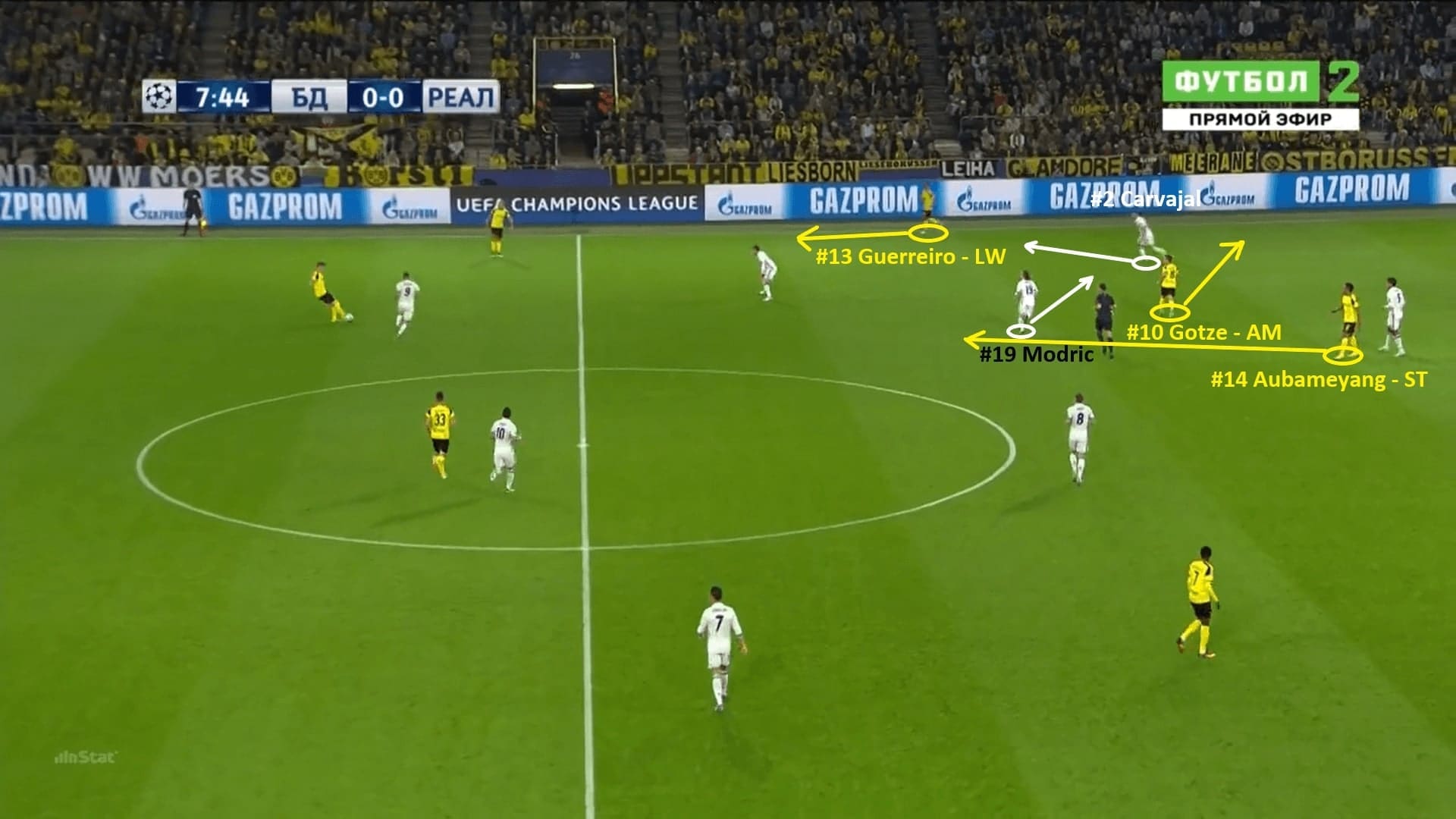
This also means that we are likely to see a lot of rotational movement from Tuchel down the flanks, as this is one of the key facets of his tactics. He will try to get players with offensive superiority, such as Ousmane Dembélé at Dortmund, for example, into isolated situations on the flanks so that they have space to run into, and there are many candidates for this at Chelsea, with the likes of Callum Hudson-Odoi, Christian Pulisic, and Ziyech especially.
On the ‘stronger’ flank, the team will look to advance the ball through positional rotations. We can see this in the above image, where a series of anti-clockwise movements opens the passing lane to the striker. As soon as the left-sided midfielder drops, the attacking midfielder moves wide to take up the wide space, and then the striker can drop into the space vacated by the offensive midfielder to receive the ball.
How will he get the best out of Werner and Havertz?
Finally, we come to the two most important signings of Chelsea’s transfer window – Kai Havertz and Timo Werner. Lampard’s inability to get the best out of the German duo has undoubtedly been a big factor in his removal, and Tuchel will need to quickly revitalise them if they are to realize their potential at Stamford Bridge.
Before looking at this in more detail, we will briefly summarize what we believe will be the potential lineups and positions of the Chelsea players under Tuchel. He might use a 4-3-3 or a 4-4-2, with some players being played in familiar roles, but players like Ziyech or Chilwell, as explained, might need to play in a new position. It will be the same for Havertz and Werner, as Tuchel might even play them together as strikers, and it is extremely important, in particular, to put the former Bayer Leverkusen man closer to the penalty area.

If Havertz is played at centre-forward, he is very likely to drop deep in the build-up to create a central overload at the midfield. This is similar to a lot of what he did in Germany and should not be new to him.
Let’s imagine that Chelsea are facing a 4-2-3-1 – an opponent that has three midfielders in the centre. With Havertz dropping deep, it will be very easy for Chelsea to create a numerical advantage at the centre of the pitch. The shape might be a diamond as suggested below, but it is also possible to appear in other forms.
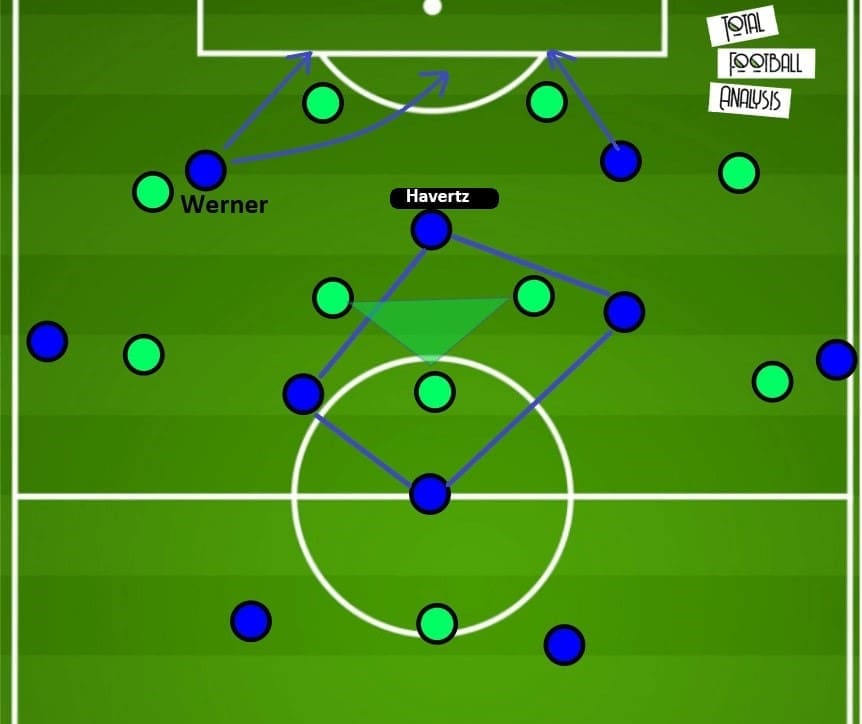
In the above occasion, the centre-backs were not aggressive in pressingHavertz. So, if he receives the ball, he can turn, and Chelsea would be in the final third.
Alternatively, if Havertz’s movement is going to take the opposition centre-back out of position, that is even better. Tuchel’s team will always have the verticality to play behind the defence. The below situation shows such a case, where one centre-back leaves the backline to follow Havertz, and thus the winger (e.g. Werner) or offensive midfielder can utilize the space created and make a run in behind.
With Jorginho playing as the pivot, such a pass would be quite possible to pull off, and would lead to a 1v1 with the keeper.
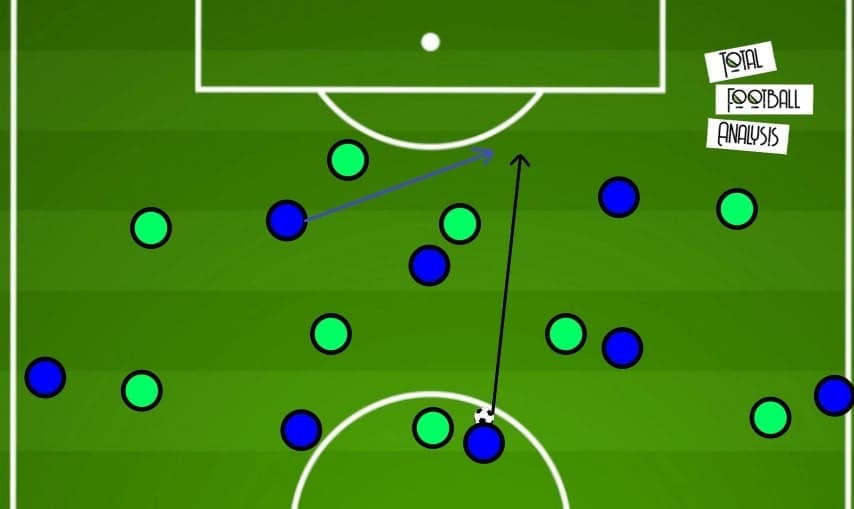
The below image is a game situation which shows Dortmund doing this. The offensive midfielder drops to offer a short option for the ball, and the centre-back follows him. Pierre-Emerick Aubameyang instantly runs into the space available behind the defence, and he is just a step too early and is caught offside. With slightly better timing, he would likely have been through on goal.
One additional point to note is that Aubameyang developed into an well-rounded striker under Tuchel – making a lot of functional runs to different directions (dropping deep, running in behind, diagonal runs to the wide spaces and so on). He was already extremely proficient at offensive transitions, so Chelsea fans can hope that Tuchel can have a similar impact on Werner and Havertz.
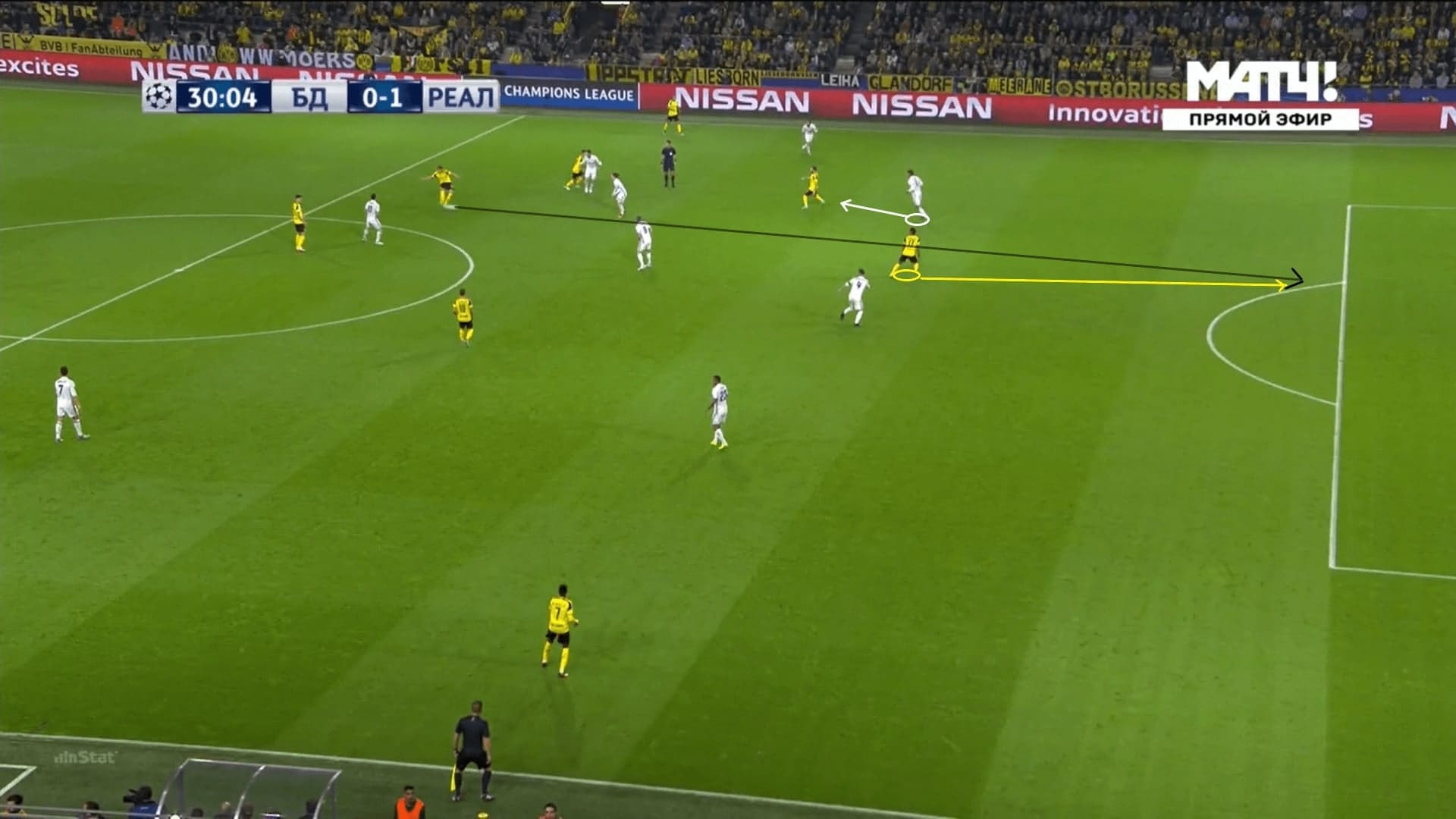
We have to be clear that this is not the only tactical possibility for Werner and Havertz at Chelsea. These two players are exceptionally talented, and the possible roles that could allow the duo to fly at Chelsea are countless. The aforementioned way is just one of the easiest ideas, and there are bound to be other ways in which Tuchel deploys these two players.
Final remarks
This analysis discusses Thomas Tuchel’s tactical philosophy, and what can be expected from him at Chelsea with the players at his disposal. Tuchel has something of a reputation as being uncompromising to his ideals, but his tenure at PSG saw him adapt quite a bit to the squad available to him. The tweaks and changes mentioned here may not be implemented instantly, but seem the most sensible given the profile of the squad at Chelsea, and the quickest way to get some of the players performing at a higher level than they were earlier.
He is one of the best tacticians in the world at the moment, and we have projected how would he potentially change the roles of some key players at Chelsea. However, we should bear in mind Tuchel’s tactics have never been the reason for his departures from previous clubs; they have been triggered by his issues with executives and the so-called politics behind the scenes. Tuchel has a penchant for being uncompromising in terms of his demands and the way he does things, which has often not gone down well with his superiors at previous clubs. This is especially interesting given that he has chosen to now come to Chelsea, where political intrigue and dressing-room power have caused a number of managers, including Lampard, to lose their jobs under Roman Abramovich’s ownership. Can he handle the hierarchy at Chelsea better? Time will tell…




Comments